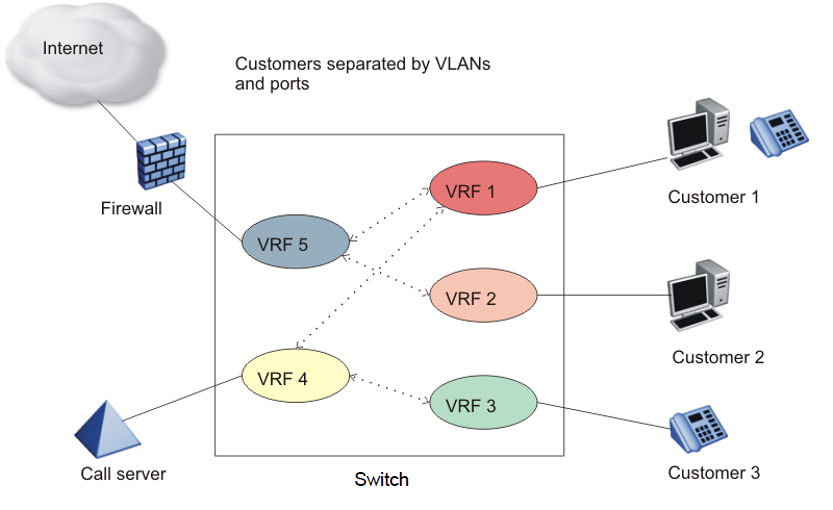VRF Lite Capability and Functionality
VRF Lite supports virtualization of the following IPv4 and IPv6 protocols and features.
-
IPv4 protocols or features:
-
ARP
-
BGP
-
Circuitless IP
-
DHCP
-
IGMP
-
RIP
-
Route policies
-
Route preferences
-
Router Discovery
-
Static routes
-
User Datagram Protocol (UDP)
-
VLAN
-
VRRP
-
-
IPv6 protocols or features:
-
BGP
-
IPv6 Interfaces and IPv6 Static Routes
-
ECMP and Alternative Route
-
OSPF
-
Route redistribution for static and direct routes
-
VRRPv3
-
DHCP Relay
-
IPv6 Reverse Path Forwarding
-
ICMP Ping & Traceroute
-
ISIS Accept Policies
-
The switch uses VRF Lite to perform the following actions:
-
Partition traffic and data and represent an independent router in the network
-
Provide virtual routers that are transparent to end-users
-
Support addresses that are not restricted to the assigned address space provided by host Internet Service Providers (ISP)
-
Support overlapping IP address spaces in separate VRF instances

Note
If you enable multicast route redistribution between two VRFs, the switch does not support IP addresses that overlap within the two VRFs. The device does not generate an error if addresses overlap. You must avoid this situation.
VRF Lite interoperates with RFC 4364, Layer 3 VPNs. Split MultiLink Trunking (SMLT) and Routed SMLT (RSMLT) are also supported for VRF instances.
Although customer data separation into Layer 3 virtual routing domains is usually a requirement, sometimes customers must access a common network infrastructure. For example, they want to access the Internet, data storage, Voice over IP (VoIP)-public switched telephone network (PSTN), or call signaling services. To interconnect VRF instances, you can use an external firewall that supports virtualization, or use inter-VRF forwarding for specific services. With the inter-VRF solution, you can use routing policies and static routes to inject IP subnets from one VRF instance to another, and you can use filters to restrict access to certain protocols. The following figure depicts inter-VRF forwarding by the switch.

For more information about the latest VRF Lite scalability, see VSP 8600 Release Notes.
For configuration information about multicast virtualization, see IP Multicast.

